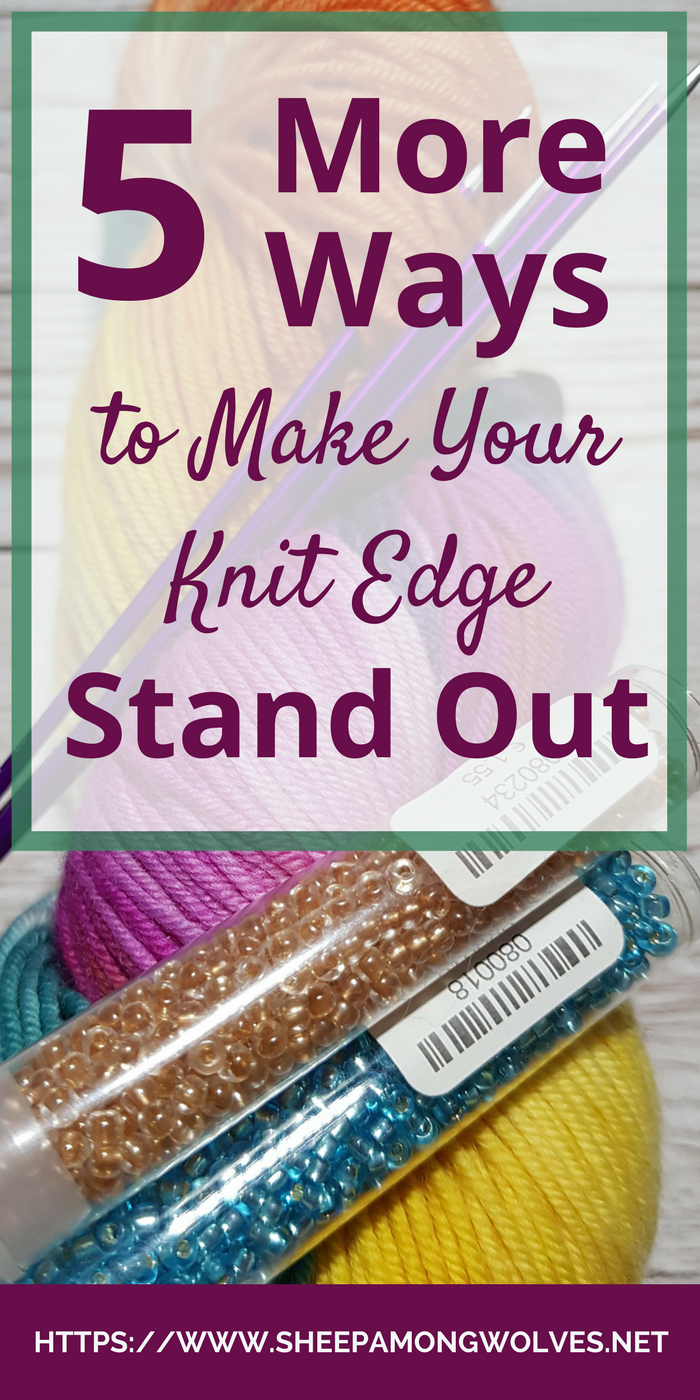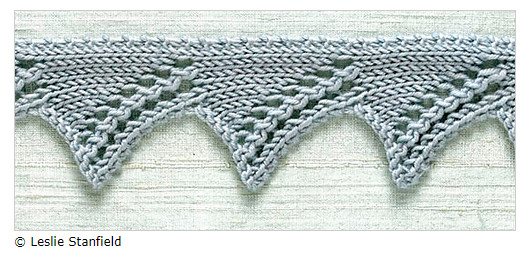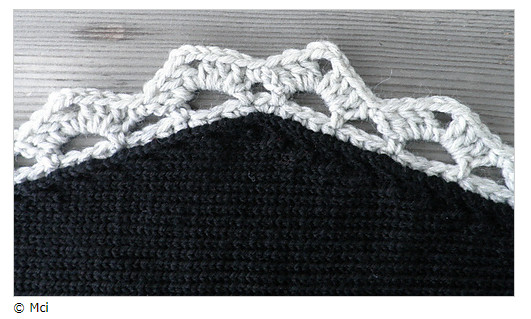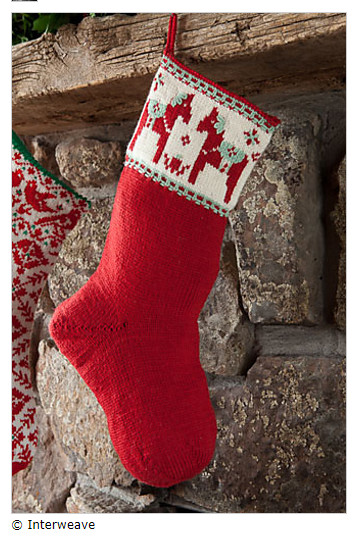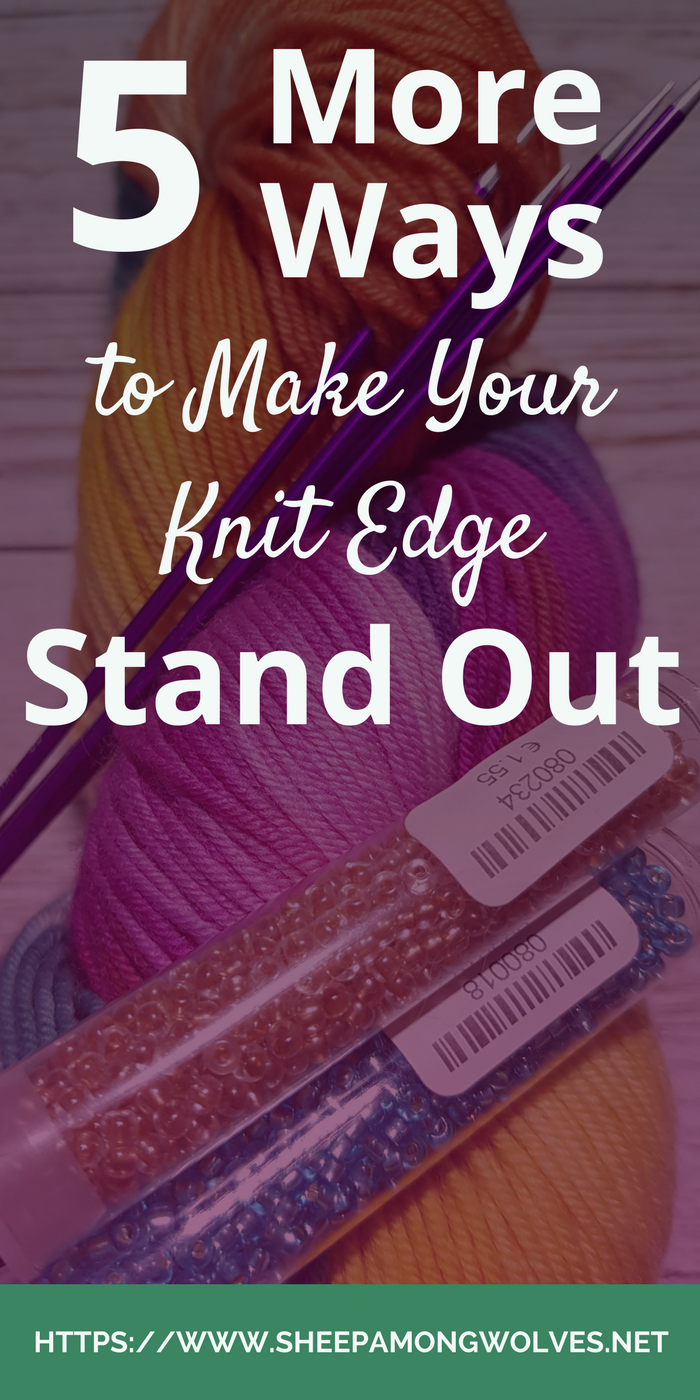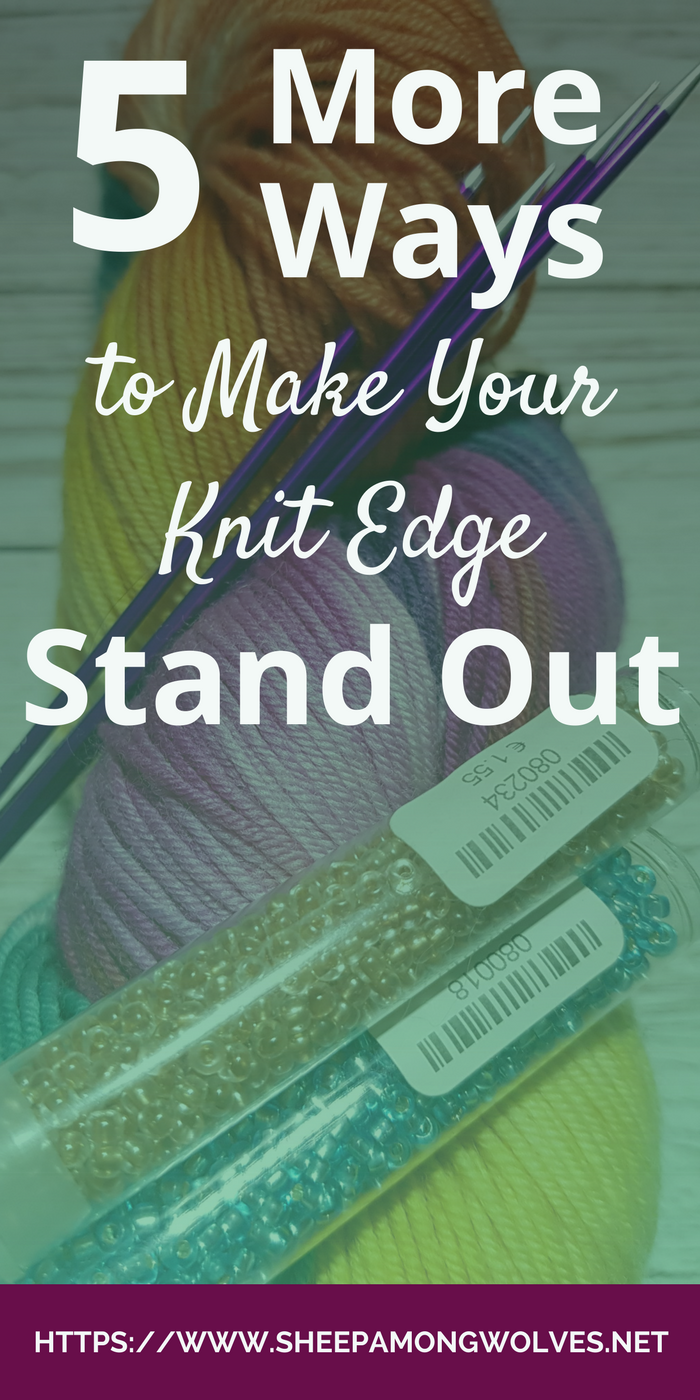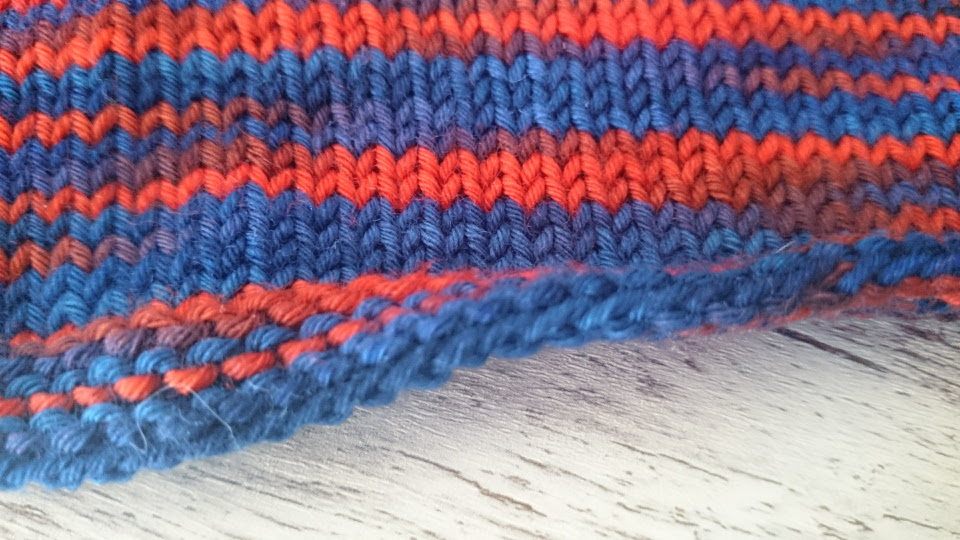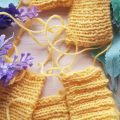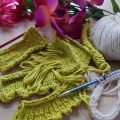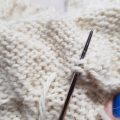We’ve talked a lot about decorative cast ons. Worked with either a single color or with multiple strands in different shades. But are there other ways to spice up your cast on edge? There are a couple of things you can do to decorate your knitting further. All of these methods will not only work on your cast on edge but any edge, some even throughout your knitting. For some, you need to plan ahead. Others you can apply as you see fit after the fact. Now let’s get started.
1 – Beads
Beads exist in various sizes. Shapes and colors. They look stunning in shawls and scarfs but also decorate gloves or sweaters nicely. There are different ways in which you can use them.
Prestrung
You string some beads onto your working yarn before you cast on. Whenever you want to place a bead in your knitting, you slip it down to your needles and (usually) make a purl stitch and slip that bead into position sit on that purl bump (as seen below). Or you can slip the stitch with the yarn and the bead in front. But you can also add them to yarn overs or leave loose loops with beads on them while casting on.
It’s beautiful but there are a few things to consider with this method:
- You need to have a chart/plan of where the beads should be placed
- Plan and calculate how many beads you will need. You can’t add any later (or at least not easily)
- You need to keep slipping the beads further along the yarn as you are knitting which will reduce your speed and may strain the yarn if the beads are sitting very tight on it.
- If you are putting the beads on purl bumps: While you are knitting the beads may slip off of the purl bump and onto the yarn in between stitches. This means they are only visible on the backside. You may have to push them back onto the purl bump every now and then, further decreasing your knitting speed. After a few rows of knitting, they will stay in place, though.
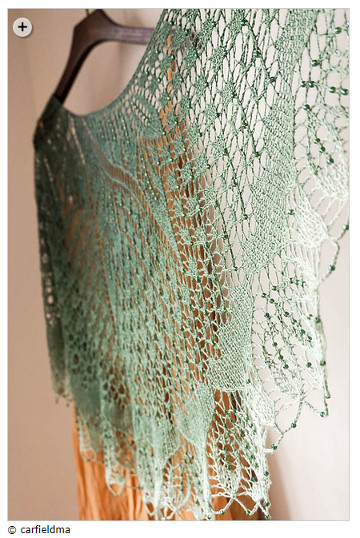
This shawl does not just include beads throughout but also on the very edge. Click on the image to get to the free pattern (Dancing Butterflies by Carfield Ma)
Stringing the beads takes quite some time (it depends on the number of beads you need) and can be quite tough to accomplish if the bead is a tight fit for the yarn. I’ve found it easiest to do with a thin sewing needle and a piece of fine thread. The sewing needle needs to fit through the bead of course. You close the thread in a loop after placing it on your sewing needle and then place your working yarn in that loop. Put beads on the needle and push them down over the needle and thread onto your yarn. Depending on how large the bead is you may have to pull a bit to get it onto the yarn. And look out that you don’t prick yourself.
Slipped on a stitch
You can also add beads to a stitch while knitting. You will need a very small crochet hook or beading hook (hook and yarn need to fit through the bead) for this, though. Place a bead on the hook, then slip the hook into the stitch and pull the bead over it (like a collar). After that, you slip the stitch back on the left-hand needle and work it.
You can use this method on your very first row of knitting, right after casting on. And if you are using a knitted cast on you could easily incorporate it even into your cast on itself. Just place the bead on the stitch you just created.
This can be very fiddly, and I often had the problems that the hook would split the yarn or that it would slip off entirely. Also, the stitch will be slightly elongated because it needs to accommodate the bead as well. It is an excellent method for adding beads to lace projects, however.
Sewing them on later
Of course, you can “fake” it and sew them on like buttons. Or even add them to fringe. A beaded fringe can look stunning.

Chevron Fringe Shawl by Susanne Sommer (screenshot from Ravelry; click on the image to go to the pattern)
2 – Fringe
Fringe can be added to any knitted edge. You can use a contrasting color, your main yarn or even multiple strands at once. Or go wild and use an entirely different yarn and yarn weight. A fuzzy or almost furry looking yarn for example. Or even a sequined or beaded yarn.
You will need a crochet hook or some other tool, though. I’ve been taught to use a crochet hook for adding fringe when I was a child (my mother did a lot of knitting in the 60s and early 70s, hence the fringe knowledge).
3 – Knitted Edges
With knitted edges the possibilities become endless. There are entire books (*) just about this subject (*), and you can use any stitch pattern you like. Knit a long and slim piece and then pick up stitches from it later. Use live or held stitches or pick up stitches from any of your edges and knit perpendicular to it or straight out.
Even if you want to knit straight on, binding off first and then picking up stitches to knit the edge might sometimes be advisable. The bind off edge offers some stability that the live stitches wouldn’t have had. This might be useful if your edge is supposed to flare a bit or look ruffled, for example.
Some good books on Knitted Edges are:
- Knitting on the Edge by Nicky Epstein (*)
- 150 Knitted Trims by Lesley Stanfield (*)
- Knitting over the Edge by Nicky Epstein (*)
4 – Crochet Edges
I’ve only ever seen them added to projects later. I guess you could pick up stitches from a crochet piece and knit on, though.
Like knitted edges, you can add them to any edge of your project and use any pattern you like. There are some lovely looking crocheted lace patterns out there, for example.
You do of course need to know (or learn) how to crochet and have a hook of the right size for your chosen yarn.
An interesting looking book on crochet edges (the edge above is from that book) is Around the Corner Crochet Edges by Edie Eckman (*).
5 – Blanket Stitch or Embroidery
If you use duplicate stitch or another form of embroidery you can add beautiful embellishments to stockinette. I’ve seen simple lines (you can “fake” a plaid pattern this way), letters and numbers or even more complicated things like flowers, animals, cars and many more. You can be as creative as you like. It is fiddly, adds (a lot of) ends to weave in and takes patience. Which is likely why I don’t do it very often.
With a blanket stitch, you envelop your edges. It is often used on blankets (hence the name) to keep the cloth from fraying. I suppose anyway; I don’t know all that much about sewing. But there are a quite a few different blanket stitches that can be very beautiful if you use a contrasting yarn.
The book Knitting Beyond the Edge by Nicky Epstein (*) includes a lot of different amazing ideas to decorate your knit piece.
Have you used any of these methods to decorate your knitting before? Which do you like the most and which the least? Can you think of any more? Please let me know in the comments below.
Affiliate disclaimer: This post contains affiliate links (links marked by (*)). That means that at no extra cost to you I will receive a small compensation should you choose to purchase after clicking on such a link. Please, read this for more details.
This year is almost over now. It was tough for many of us. But also exciting in some ways. Starting this blog was indeed an adventure for me.
Next week you’ll get two posts from me. A knitting and blog related post-mortem of this year on Tuesday and a quick tutorial on how to sew in ends on Friday. I hope you’ll join me again in 2018 for more knitting related fun!
Did you enjoy this post? Then please share it on Pinterest!
